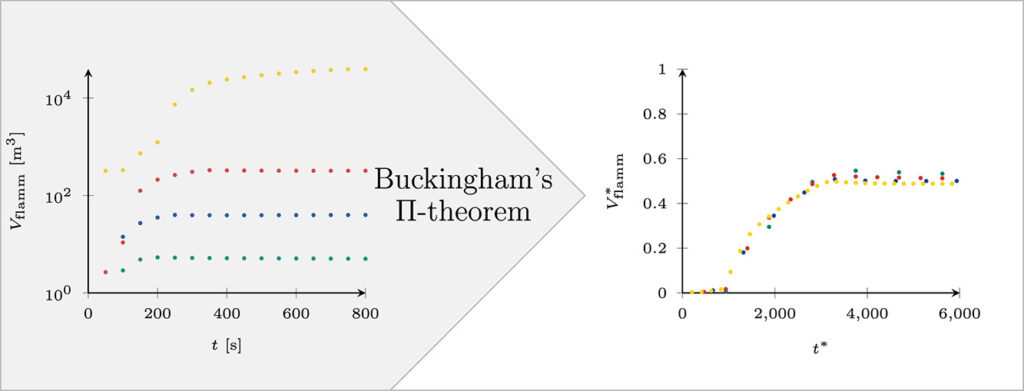Researchers Joren Vanlaere, Patrick Hendrick, and Julien Blondeau have explored the characteristics of indoor hydrogen dispersion, explicitly focusing on stratified filling. This research, titled “Indoor hydrogen dispersion with stratified filling: Can non-dimensional parameters relate dispersion characteristics across diverse applications?” illuminates critical aspects of hydrogen behavior and its implications for safety in indoor environments.
Context and Relevance
Hydrogen energy is increasingly recognized as crucial to the global shift towards renewable energy sources. However, understanding how hydrogen gas disperses in confined spaces is essential for mitigating risks associated with potential leaks, especially given hydrogen’s high flammability and wide range of explosive concentrations.
Main Findings
The study investigates whether non-dimensional parameters can effectively describe the dispersion characteristics of hydrogen across varied applications. The authors developed a series of experiments and simulations to observe hydrogen behavior when introduced into an indoor environment with stratified filling – a scenario where the gas is layered in the air due to differences in density.
Potential Applications
Understanding hydrogen dispersion is vital for designing safer storage and usage in residential, commercial, and industrial settings. This research provides essential insights that could inform guidelines and regulations, helping to ensure that hydrogen systems are deployed to minimize risk to occupants and infrastructure.
Market Relevance
With the hydrogen economy projected to grow significantly, this research addresses a critical aspect of market readiness. Safety concerns remain one of the significant barriers to widespread hydrogen adoption. By improving our understanding of indoor hydrogen dispersion, the findings support the development of safer hydrogen-powered technologies, potentially accelerating market acceptance.
Technical Details and Methodologies
The abstract indicates that the researchers used a combination of experimental setups and computational models to analyze hydrogen dispersion. Non-dimensional parameters, which allow for comparisons across different scales and environments, were a focal point of their methodology. These parameters help in universalizing the findings, making them applicable across a broad range of scenarios.
Broader Implications
The implications of this research extend beyond immediate safety applications. By contributing to a deeper understanding of hydrogen behavior in indoor environments, this study aids in the holistic development of hydrogen infrastructure. This could have positive ripple effects, supporting everything from transportation to domestic energy solutions, where hydrogen is poised to play a fundamental role.
Key Takeaways
– The study addresses the critical issue of hydrogen dispersion in indoor environments.
– Non-dimensional parameters were used to relate dispersion characteristics across various applications.
– The research findings have significant potential applications in enhancing the safety of hydrogen systems.
– Ensuring hydrogen storage and usage safety could help overcome market adoption barriers.
Conclusion
This comprehensive investigation by Vanlaere, Hendrick, and Blondeau marks a significant step forward in our understanding of hydrogen safety. Their work enhances our fundamental knowledge and paves the way for practical applications that could facilitate the broader adoption of hydrogen energy. As the hydrogen market grows, such research will be pivotal in ensuring its safe and efficient implementation.





